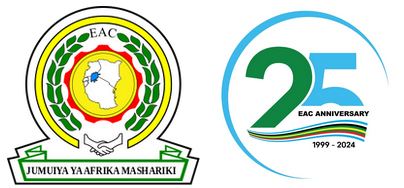Single Customs Territory
Involves interconnectivity of customs systems to facilitate seamless flow of information between customs stations and a payment system to manage transfers of revenues between EAC Partner States
The East African region has a long history of cooperation stretching back to 1900 when a Single Customs Collection point was established at Mombasa. The first instance of regional integration was established between Uganda and Kenya in 1917. Tanganyika joined later in 1919. After independence, the East African Community was established in 1967, which due to a number of factors collapsed in 1977. Notwithstanding the collapse, the East African Community recorded numerous successes including, policy, institutional and operational programmes. Acknowledging the centrality of regional integration to development, the Heads of States of Republic of Kenya, the Republic of Uganda and the United Republic of Tanzania met in 1999 and signed a Cooperation Agreement which culminated into a fully-fledged East African Community in 2000.
The scope of East African Community Treaty includes economic, social, cultural and political spheres. The integration process is progressive starting with a Customs Union (CU) as the entry point followed by Common Market (CM), Monetary Union (EAMU) and Political Federation (PF).
Implementation of the Single Customs Territory
To further consolidate the goals of the Customs Union and to address the challenges experienced, the Summit of Heads of State decided on the implementation of the Single Customs Territory which commenced in July 2014. This was a major milestone and final stage towards the attainment of fully fledged Customs Union. Under SCT assessment and payment of duties is done at the destination Partner State while goods are still at the first point of entry.
The Single Customs Territory has been implemented to facilitate faster clearance and improvement in cargo movement along the two corridors (Northern and Central) and the now Standard Gauge Railway line.
The implementation of the SCT has witnessed the development of requisite instruments, the information Technology has been revamped to respond to the new operating environment and the capacity of both the public and private sectors equally enhanced to facilitate the smooth rollout of the SCT.
Achievements in the implementation of Single Customs Territory
The implementation of SCT and other trade facilitation initiatives has seen major strides in the movement of goods across the borders.
- Time and cost of transporting goods from the respective ports of Dar es Salaam and Mombasa has reduced from 21 and 18 days to 7 and 4 days respectively. The cost has reduced from USD 3,100 to USD 1,025.
- Partner States Customs systems have been interconnected and information sharing has improved.
- Multiple entries and documents has been replaced by use of a single declaration.
- Customs processes for customs regimes were developed and deployed.
- All intra trade and imports to the region are all cleared under SCT.
- Customs systems in the region have been upgraded to facilitate clearance of cargo under SCT for intra-trade, imports and exports regimes. Enhancements to support transit regimes is underway and is expected to be completed by end of 2019.
- Selected products are being used to pilot the exports regime.
